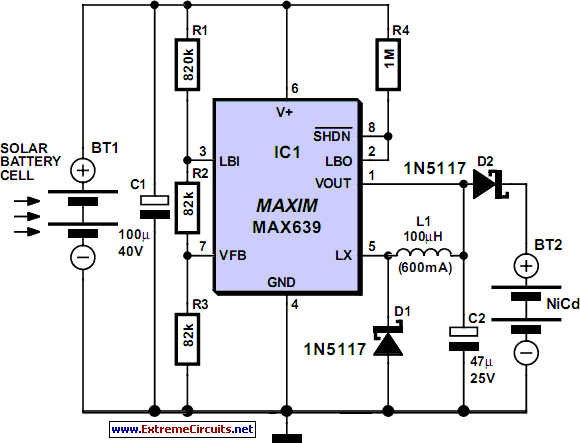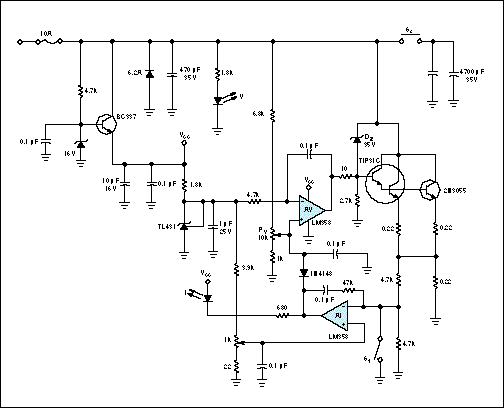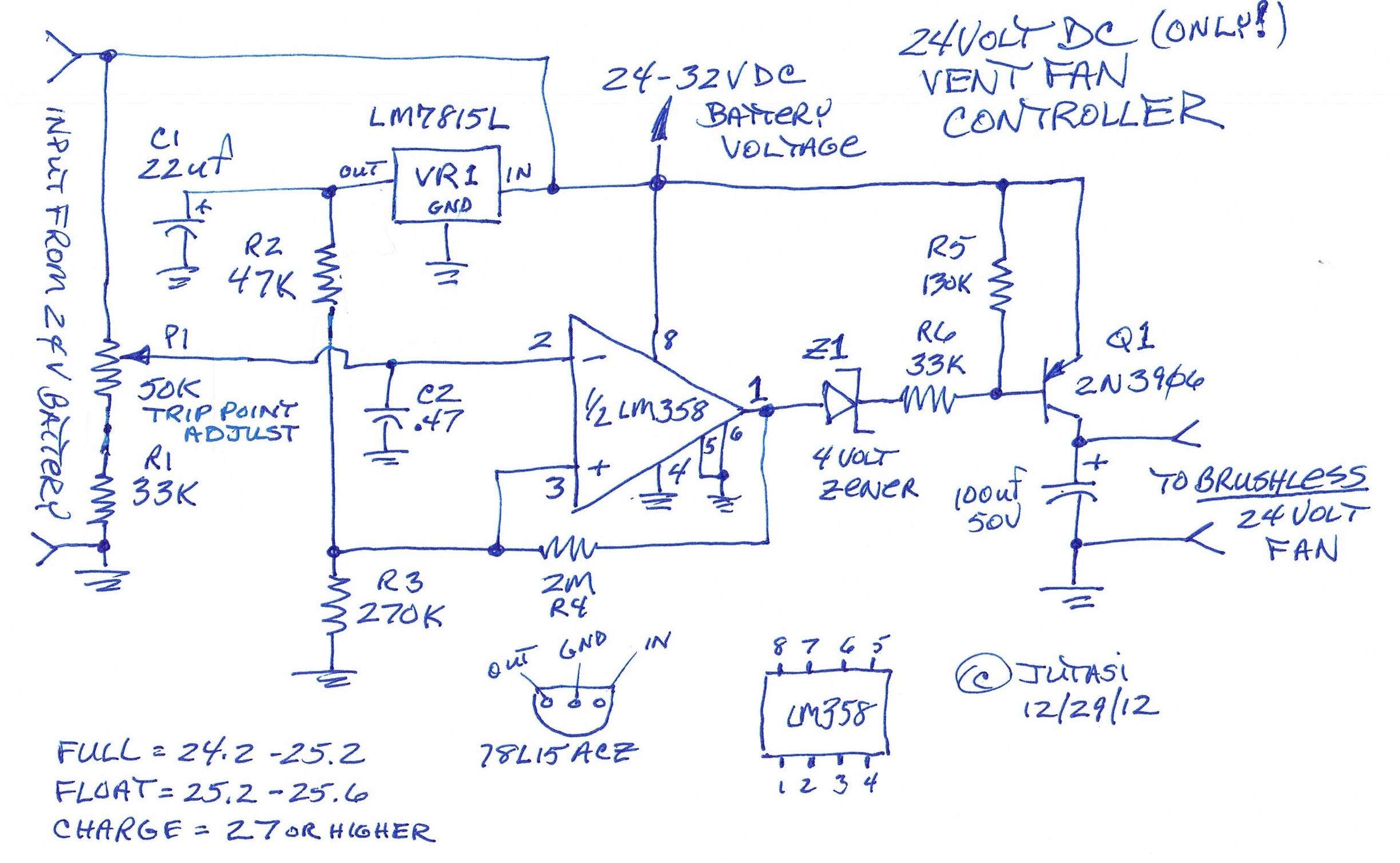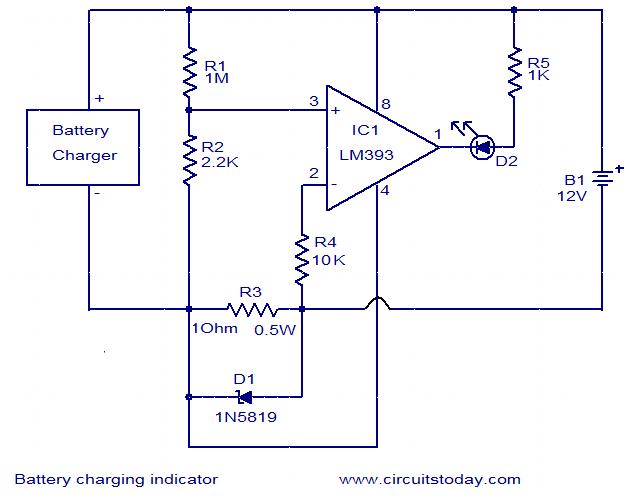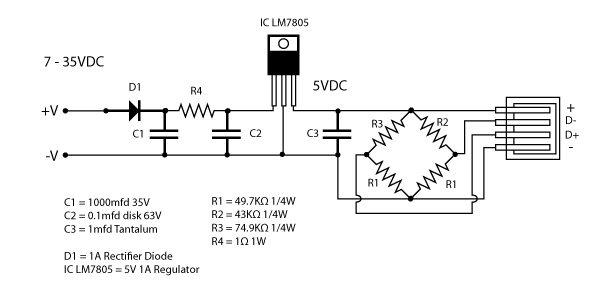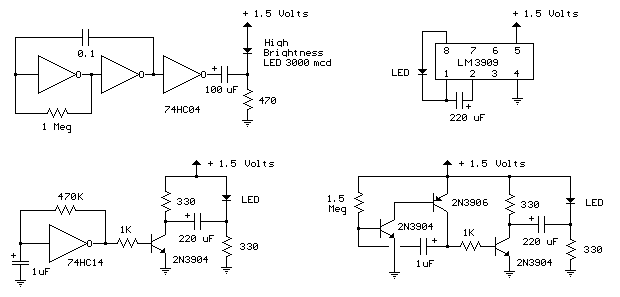
Lead Acid Battery Charger 1
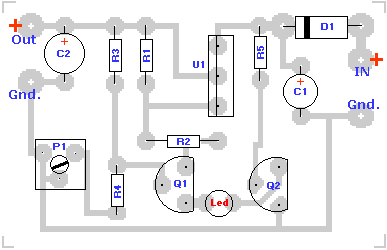
This circuit serves as a standard battery charger and is specifically designed to maintain a 12-Volt Lead-Acid Battery, such as those used in flight boxes, in an optimal charged state. It is important to note that this circuit is not suitable for GEL-type batteries due to excessive current draw. The circuit functions as a precision voltage source and incorporates a temperature sensor with a negative temperature coefficient. As the temperature of the surrounding environment or the battery increases, the output voltage will automatically decrease. The temperature coefficient for this circuit is -8mV per °C. A standard transistor (Q1) is utilized as the temperature sensor. The battery charger is based on the LM350 integrated circuit, which is a 3-amp adjustable voltage regulator IC. The output voltage can be adjusted via potentiometer P1 between 13.5 and 14.5 volts. A transistor (T2) is included to prevent battery discharge through resistor R1 when no input power is present. The value of resistor R4 can also be adjusted to modify the voltage window. Diode D1 is a large power diode rated at 100V PRV and 3 amps; a larger diode is preferred, but a smaller one is not recommended. The LM350's adjust pin maintains a constant voltage drop of 1.25V between its pin and the output pin, ensuring a continuous current flow through R1. Q1 serves as the temperature sensor, with components P1, R3, and R4 influencing its base control. The emitter/base junction of Q1 exhibits a temperature coefficient of -2mV/°C, resulting in a negative temperature coefficient for the output voltage, which is approximately -8mV/°C due to the multiplication factor of the resistors P1, R3, and R4. To mitigate self-heating of the sensor Q1 due to its own current draw, it is advisable to attach a cooling fin. For accurate temperature compensation, Q1 should be installed as close to the battery as possible. A red LED (D2) indicates the presence of input power. Depending on the type of transistor used for Q1, the pads on the circuit board may not align perfectly, particularly in the case of the BD140.
This battery charger circuit is designed to provide a reliable and efficient method for maintaining the charge of a 12-Volt Lead-Acid battery. The core component, the LM350 IC, is capable of delivering adjustable output voltage, making it versatile for various applications. The inclusion of a temperature sensor allows for dynamic voltage adjustment based on the thermal characteristics of the battery, thereby enhancing battery life and performance.
The circuit's design ensures that the output voltage remains within a specified range, adjustable through the potentiometer P1, which allows for fine-tuning based on the specific requirements of the battery being charged. The use of a power diode (D1) safeguards against reverse current flow, which could potentially damage the circuit or the battery. The configuration of resistors R1 and R4, along with the potentiometer, establishes a feedback loop that ensures stability in the charging process.
The temperature compensation feature is critical in preventing overcharging, especially in varying environmental conditions. As the ambient temperature rises, the voltage output decreases, which is essential for maintaining the health of the battery. The recommendation to attach a cooling rib to the transistor Q1 is a prudent measure, as it minimizes the risk of thermal runaway that can occur due to self-heating.
Overall, this circuit is suitable for hobbyists and professionals who require a dependable method to keep their Lead-Acid batteries in peak condition, particularly in applications where battery performance is crucial, such as in remote control systems or other battery-powered devices.Except for use as a normal Battery Charger, this circuit is perfect to `constant-charge` a 12-Volt Lead-Acid Battery, like the one in your flight box, and keep it in optimum charged condition. This circuit is not recommended for GEL-TYPE batteries since it draws to much current. The above circuit is a precision voltage source, and contains a tempe rature sensor with a negative temperature co »ficient. Meaning, whenever the surrounding or battery temperature increases the voltage will automatically decrease. Temperature co »ficient for this circuit is -8mV per °Celcius. A normal transistor (Q1) is used as a temperature sensor. This Battery Charger is centered around the LM350 integrated, 3-amp, adjustable stabilizer IC. Output voltage can be adjusted with P1 between 13. 5 and 14. 5 volt. T2 was added to prevent battery discharge via R1 if no power present. P1 can adjust the output voltage between 13. 5 and 14. 5 volts. R4`s value can be adjusted to accommodate a bit larger or smaller window. D1 is a large power-diode, 100V PRV @ 3 amp. Bigger is best but I don`t recommend going smaller. The LM350`s `adjust` pin will try to keep the voltage drop between its pin and the output pin at a constant value of 1.
25V. So there is a constant current flow through R1. Q1 act here as a temperature sensor with the help of components P1/R3/R4 who more or less control the base of Q1. Since the emitter/base connection of Q1, just like any other semiconductor, contains a temperature co »ficient of -2mV/ °C, the output voltage will also show a negative temperature co »ficient.
That one is only a factor of 4 larger, because of the variation of the emitter/basis of Q1 multiplied by the division factor of P1/R3/R4. Which results in approximately -8mV/ °C. To prevent that sensor Q1 is warmed up by its own current draw, I recommend adding a cooling rib of sorts.
(If you wish to compensate for the battery-temperature itself, then Q1 should be mounted as close on the battery as possible) The red led (D2) indicates the presence of input power. Depending on what type of transistor you use for Q1, the pads on the circuit board may not fit exactly (in case of the BD140).
🔗 External reference
This battery charger circuit is designed to provide a reliable and efficient method for maintaining the charge of a 12-Volt Lead-Acid battery. The core component, the LM350 IC, is capable of delivering adjustable output voltage, making it versatile for various applications. The inclusion of a temperature sensor allows for dynamic voltage adjustment based on the thermal characteristics of the battery, thereby enhancing battery life and performance.
The circuit's design ensures that the output voltage remains within a specified range, adjustable through the potentiometer P1, which allows for fine-tuning based on the specific requirements of the battery being charged. The use of a power diode (D1) safeguards against reverse current flow, which could potentially damage the circuit or the battery. The configuration of resistors R1 and R4, along with the potentiometer, establishes a feedback loop that ensures stability in the charging process.
The temperature compensation feature is critical in preventing overcharging, especially in varying environmental conditions. As the ambient temperature rises, the voltage output decreases, which is essential for maintaining the health of the battery. The recommendation to attach a cooling rib to the transistor Q1 is a prudent measure, as it minimizes the risk of thermal runaway that can occur due to self-heating.
Overall, this circuit is suitable for hobbyists and professionals who require a dependable method to keep their Lead-Acid batteries in peak condition, particularly in applications where battery performance is crucial, such as in remote control systems or other battery-powered devices.Except for use as a normal Battery Charger, this circuit is perfect to `constant-charge` a 12-Volt Lead-Acid Battery, like the one in your flight box, and keep it in optimum charged condition. This circuit is not recommended for GEL-TYPE batteries since it draws to much current. The above circuit is a precision voltage source, and contains a tempe rature sensor with a negative temperature co »ficient. Meaning, whenever the surrounding or battery temperature increases the voltage will automatically decrease. Temperature co »ficient for this circuit is -8mV per °Celcius. A normal transistor (Q1) is used as a temperature sensor. This Battery Charger is centered around the LM350 integrated, 3-amp, adjustable stabilizer IC. Output voltage can be adjusted with P1 between 13. 5 and 14. 5 volt. T2 was added to prevent battery discharge via R1 if no power present. P1 can adjust the output voltage between 13. 5 and 14. 5 volts. R4`s value can be adjusted to accommodate a bit larger or smaller window. D1 is a large power-diode, 100V PRV @ 3 amp. Bigger is best but I don`t recommend going smaller. The LM350`s `adjust` pin will try to keep the voltage drop between its pin and the output pin at a constant value of 1.
25V. So there is a constant current flow through R1. Q1 act here as a temperature sensor with the help of components P1/R3/R4 who more or less control the base of Q1. Since the emitter/base connection of Q1, just like any other semiconductor, contains a temperature co »ficient of -2mV/ °C, the output voltage will also show a negative temperature co »ficient.
That one is only a factor of 4 larger, because of the variation of the emitter/basis of Q1 multiplied by the division factor of P1/R3/R4. Which results in approximately -8mV/ °C. To prevent that sensor Q1 is warmed up by its own current draw, I recommend adding a cooling rib of sorts.
(If you wish to compensate for the battery-temperature itself, then Q1 should be mounted as close on the battery as possible) The red led (D2) indicates the presence of input power. Depending on what type of transistor you use for Q1, the pads on the circuit board may not fit exactly (in case of the BD140).
🔗 External reference
